E-Business Strategy in Developing Countries: A Framework and Checklist for the Small Business Sector
Abstract
:1. Introduction
2. Relevant Literature
2.1. The E-Business Concept
2.2. E-Business Strategy in the Digital Era
2.3. E-Business in Developing Countries
2.4. E-Business Models and Frameworks
2.5. Conceptual Framework
3. Research Method
4. The E-Business Strategy Framework
4.1. Strategy Development
4.1.1. Specify Goals and Objectives
4.1.2. Analyse Current Situation
4.1.3. Prioritise Action Areas
4.1.4. Plan Strategy Implementation
4.2. Strategy Implementation
4.2.1. Startup
4.2.2. Trial
4.2.3. Expand
4.2.4. Embed
4.2.5. Review Progress
4.3. Strategy Review
4.3.1. Status Assessment
4.3.2. Cost-Benefit Analysis
4.3.3. Review Goals and Objectives
5. Framework Validation and Guidelines
5.1. Framework Validation
- P1: Principal Partner OMO Legal; P2: Owner of HGB Stores; P3: Owner of ABC Laundries; P4: Owner of KDY Energy; P5: Owner of GPY Properties; P6: Owner of NUGX Consulting.
- P7: Business Analyst1; P8: Business Analyst2; P9: Business Analyst3.
- P10: Project Manager1; P11: Project Manager2; P12: Project Manager3.
It’s a fantastic structure here. I think this is really simple and it’s just self-explanatory. And it’s like a guiding process for everyone from planning strategy implementation, to start up, trial and other stages. I think it’s great. I think this will really help and I would definitely recommend this to anyone running a small business in Nigeria. This is really good.
Considering the purpose of this framework and the way you have put it together, I think it’s really concise and very straightforward. So, I believe it’s something that’s achievable for small business owners in Nigeria, to be able to adapt this particular framework, to develop e-business in their businesses. So, it’s really neat. For the first time I saw something like this, I just felt, okay a common businessman in Nigeria with less than 50 employees, should be able to adapt to this because it’s quite straightforward.
I think it is very useful. I think it breaks it down into little small chunks, so that… as you are going through one stage, you can pick individual elements within the people process and technology aspects to address. It is a very helpful guide. Many times, in a big organisation, things are already set up. I think more than anywhere else, guides like this are very important and useful in small businesses where you are trying to put structure in place.
“One of the core strengths of the framework is that it shows you exactly what you need to do”, and P10 commented that “by providing clear activities in each of the people, process and technology dimensions in all the phases and stages of the framework, the framework is clear and easy to follow”.
- Realistic and relevant to the SBE environment in Nigeria.
- Comprehensive in that it encompasses multiple dimensions of change.
- Easy to use and understand, with some qualifications regarding the need for knowledge of technologies involved.
- Adaptable to different company sizes and business environments.
- Very useful as a roadmap that could overlay, and integrate with, other methodologies that may be in use.
5.2. Guidelines for Framework Deployment
- Establish where you are in the Development–Implementation–Review cycle: Many companies will already have embarked upon some form of e-business project. Identify what phase within the framework the company is at—Development, Implementation or Review?
- Identify which stage or stages match your current situation: By identifying the current stage, the user can focus on the process, people and technology activities required to move forward effectively.
- Review and reaffirm business goals and e-business objectives: Take a step back, review and reaffirm business goals and e-business objectives. Have a look at the process activities in the Review Goals and Objectives stage of the Strategy Review phase. Clarity of the business objectives is essential for the successful implementation of an e-business strategy in a small business.
- Familiarise management and staff with the process, people and technology elements of the framework: The framework emphasises an equal balance of process, people and technology change dimensions that are necessary for e-business implementation in an SBE. It is important all involved staff understand and buy-into the fundamental concept of managed multi-dimensional change.
- Reflect on the previous two stages: Check that the activities that should have been undertaken in the past two stages are now completed as necessary before moving forward. (This step should be omitted for companies just starting their e-business initiative).
- Set the course ahead and secure management buy-in: Review immediate and short-term activities in all three dimensions (process, people and technology), and allocate resources as needed. The owner or managing partners are responsible for making most decisions in SBEs, so their support and familiarity with the framework and its budgetary implications is essential.
- Plan next stage: Get management and team structures in place, review resource issues and plan accordingly.
6. Conclusions
Author Contributions
Funding
Institutional Review Board Statement
Informed Consent Statement
Data Availability Statement
Conflicts of Interest
References
- Chen, Y.; Ruikar, K.D.; Carrillo, P.M. Strategic e-business framework: A holistic approach for organisations in the construction industry. J. Inf. Technol. Constr. 2013, 18, 306–320. [Google Scholar]
- Chaffey, D. Digital Business and E-Commerce Management; Pearson Education Limited: London, UK, 2014. [Google Scholar]
- Nigerian Communications Commission. Subscriber Statistics. 2020. Available online: https://www.ncc.gov.ng/stakeholder/statistics-reports/subscriber-data (accessed on 28 June 2020).
- European-Commission. Small Business Definition. 2006. Available online: http://ec.europa.eu/enterprise/entrepreneurship/craft/definition.htm (accessed on 4 April 2013).
- Wynn, M.; Jones, P. The sustainable development goals, the ICT industry and ICT4D research. In Struggles and Success in the Pursuit of Sustainable Development; Keong, T., Flynn, P., Gudic, M., Eds.; Routledge: London, UK; New York, NY, USA, 2020; pp. 84–95. ISBN 9781351140560. [Google Scholar]
- United Nations. Digital Economy Report. 2019. Available online: https://unctad.org/system/files/official-document/der2019_en.pdf (accessed on 14 June 2021).
- Heeks, R. ICT4D 2016: New Priorities for ICT4D Policy, Practice and WSIS in a Post-2015 World. Dev. Inform. Work. Pap. Ser. 2014, 59. Available online: https://www.research.manchester.ac.uk/portal/en/publications/ict4d-2016-new-priorities-for-ict4d-policy-practice-and-wsis-in-a-post2015-world(c008faff-a588-4efb-acac-e5965dede72a).html (accessed on 14 June 2021). [CrossRef] [Green Version]
- Heeks, R. Examining Digital Development: The Shape of Things to Come? Dev. Inform. Work. Pap. Ser. 2016, 64. Available online: http://hummedia.manchester.ac.uk/institutes/gdi/publications/workingpapers/di/di_wp64.pdf (accessed on 14 June 2021). [CrossRef] [Green Version]
- UNCTAD. Can Developing Nations Compete in a Digital World? 2019. Available online: https://unctad.org/news/can-developing-nations-compete-digital-world (accessed on 10 June 2021).
- Olayinka, O. The Adoption of E-business Technologies and Processes in Nigerian Small Business Enterprises. Ph.D. Thesis, University of Gloucestershire, Cheltenham, UK, 2020. Available online: http://eprints.glos.ac.uk/9787/ (accessed on 10 June 2021).
- Schneider, G. Electronic Commerce; Cengage Learning: Boston, MA, USA, 2014. [Google Scholar]
- Turban, E.; Whiteside, J.; King, D.; Outland, J. Introduction to Electronic Commerce and Social Commerce; Springer International Publishing (Springer Texts in Business and Economics): Berlin, Germany, 2017. [Google Scholar]
- Laudon, J.P.; Laudon, K.C. Management Information Systems: Managing the Digital Firm; Pearson Education Limited: London, UK, 2017; Available online: https://paginas.fe.up.pt/~acbrito/laudon/ch1/chpt1-1main.htm (accessed on 14 June 2021).
- Kapurubandara, M. A model to etransform SMEs in developing countries. In Proceedings of the 2008 Fourth International Conference on Information and Automation for Sustainability (ICIAFS), Colombo, Sri Lanka, 12–14 December 2008; pp. 401–406. [Google Scholar]
- Bharadwaj, A.; El Sawy, O.; Pavlou, P.; Venkatraman, N. Digital business strategy: Toward a next generation of insights. Manag. Inf. Syst. Q. 2013, 37, 471–482. [Google Scholar] [CrossRef]
- Singh, A.; Hess, T. How Chief Digital Officers Promote the Digital Trans-formation of their Companies. Manag. Inf. Syst. Q. Exec. 2017, 16, 1–17. [Google Scholar]
- Rahayu, R.; Day, J. E-commerce adoption by SMEs in developing countries: Evidence from Indonesia. Eurasian Bus. Rev. 2017, 7, 25–41. [Google Scholar] [CrossRef] [Green Version]
- Janita, I.; Chong, W.K. Barriers of b2b e-business adoption in Indonesian SMEs: A Literature Analysis. Procedia Comput. Sci. 2013, 17, 571–578. [Google Scholar] [CrossRef] [Green Version]
- Agwu, M.E.; Murray, P.J. Drivers and Inhibitors to E-Commerce Adoption among SMEs in Nigeria. J. Emerg. Trends Comput. Inf. Sci. 2014, 5, 192–199. [Google Scholar]
- Emeti, C.I.; Onyeaghala, O. E-Business Adoption and Consumer Attitude in Nigeria. Eur. J. Bus. Manag. 2015, 7, 76–87. [Google Scholar]
- Faloye, D.O. The adoption of e-commerce in small businesses: An empirical evidence from retail sector in Nigeria. J. Bus. Retail Manag. Res. 2014, 8, 54–65. [Google Scholar]
- Olatokun, W.; Bankole, B. Factors Influencing Electronic Business Technologies Adoption and Use by Small and Medium Scale Enterprises in a Nigerian Municipality. J. Internet Bank. Commer. 2011, 16, 1–26. [Google Scholar]
- Agwu, E.M. An investigative analysis of factors influencing E-business adoption and maintenance of commercial websites in Nigeria. Basic Res. J. Bus. Manag. Acc. 2014, 3, 5–16. [Google Scholar]
- Agwu, E.M.; Murray, P.J. Empirical Study of Barriers to Electronic Commerce Adoption by Small and Medium Scale Businesses in Nigeria. Int. J. Innov. Digit. Econ. 2015, 6, 1–19. [Google Scholar] [CrossRef]
- Raghavan, V.; Wani, M.; Abraham, D.M. Exploring E-Business in Indian SMEs: Adoption, Trends and the Way Forward. In Emerging Markets from a Multidisciplinary Perspective; Springer: Cham, Switzerland, 2018; pp. 95–106. [Google Scholar]
- Abdullah, A.; White, G.; Thomas, B. An Extended Stage Model for Assessing Yemeni SMEs E-Business Adoption. In Creating Entrepreneurial Space: Talking Through Multi-Voices, Reflections on Emerging Debates; Emerald Publishing Limited: Bingley, UK, 2019; pp. 9–26. [Google Scholar]
- Wynn, M.; Turner, P.; Lau, E. E-business and process change in the UK SME sector. J. Small Bus. Enterp. Dev. 2013, 20, 913–933. [Google Scholar] [CrossRef]
- Afolayan, A.; Plant, E.; White, G.R.T.; Jones, P.; Beynon-Davies, P. Information Technology Usage in SMEs in a Developing Economy. Strateg. Chang. 2015, 24, 483–498. [Google Scholar] [CrossRef] [Green Version]
- Chaffey, D. E-Business and E-Commerce Management—Strategy, Implementation and Practice, 4th ed.; Pearson Education Limited: London, UK, 2009. [Google Scholar]
- Gray, C.; Zappala, S. Impact of e-Commerce on Consumers and Small Firms; Ashgate Publishing Limited: Farnham, UK, 2012. [Google Scholar]
- Putra, P.O.H.; Hasibuan, Z.A. E-Business Framework for Small and Medium Enterprises: A Critical Review. In Proceedings of the 3rd International Conference on Information and Communication Technology, Bali, Indonesia, 27–29 May 2015; pp. 516–521. [Google Scholar]
- Rodgers, J.A.; Yen, D.C.; Chou, D.C. Developing e-business: A strategic approach. Inf. Manag. Comput. Secur. 2002, 10, 184–192. [Google Scholar] [CrossRef] [Green Version]
- Department of Trade and Industry. Business in the Information Age: International Benchmarking Study 2003; Booz Allen Hamilton: London, UK, 2003.
- Abdullah, A.; White, G.; Thomas, B. Conceptualising a New Stage Model of Electronic Business Adoption in Yemeni SMEs. In Proceedings of the 39th Annual Conference of the Institute for Small Business and Entrepreneurship (ISBE), Paris, France, 1–2 June 2016; pp. 26–27. [Google Scholar]
- Heeks, R. Information systems and developing countries: Failure, success, and local improvisations. Inf. Soc. 2002, 18, 101–112. [Google Scholar] [CrossRef]
- Rezaeian, M.; Wynn, M. The implementation of ERP systems in Iranian manufacturing SMEs. Int. J. Adv. Intell. Syst. 2016, 9, 600–614. Available online: http://eprints.glos.ac.uk/4264/ (accessed on 29 May 2021).
- Zhu, K.; Kraemer, K.L.; Xu, S. The process of innovation assimilation by firms in different countries. Manag. Sci. 2006, 52, 1557–1576. [Google Scholar] [CrossRef] [Green Version]
- Pichlak, M. The innovation adoption process: A multidimensional approach. J. Manag. Organ. 2016, 22, 476–494. [Google Scholar] [CrossRef]
- Olayinka, O.; Wynn, M.G.; Bechkoum, K. E-business Adoption in Nigerian Small Business Enterprises. Int. J. Adv. Syst. Meas. 2016, 9, 230–241. [Google Scholar]
- Yin, R.K. Case Study Research and Applications: Design and Methods; SAGE Publications: Thousand Oaks, CA, USA, 2017. [Google Scholar]
- Noor, K.B.M. Case study: A strategic research methodology. Am. J. Appl. Sci. 2008, 5, 1602–1604. [Google Scholar] [CrossRef] [Green Version]
- Gray, D.E. Doing Research in the Real World; SAGE Publications: Thousand Oaks, CA, USA, 2017. [Google Scholar]
- Klenke, K. Qualitative Research in the Study of Leadership; Emerald Group Publishing Limited: Bingley, UK, 2008. [Google Scholar]
- Tong, A.; Sainsbury, P.; Craig, J. Consolidated criteria for reporting qualitative research (COREQ): A 32-item checklist for interviews and focus groups. Int. J. Qual. Health Care 2007, 19, 349–357. [Google Scholar] [CrossRef] [Green Version]
- Bell, E.; Bryman, A.; Harley, B. Business Research Methods, 4th ed.; Oxford University Press: Oxford, UK, 2018; ISBN 9780198809876. [Google Scholar]
- Mingers, J.; Mutch, A.; Wilcocks, L. Critical Realism in IS Research. Manag. Inf. Syst. Q. 2013, 37, 795–802. [Google Scholar] [CrossRef]
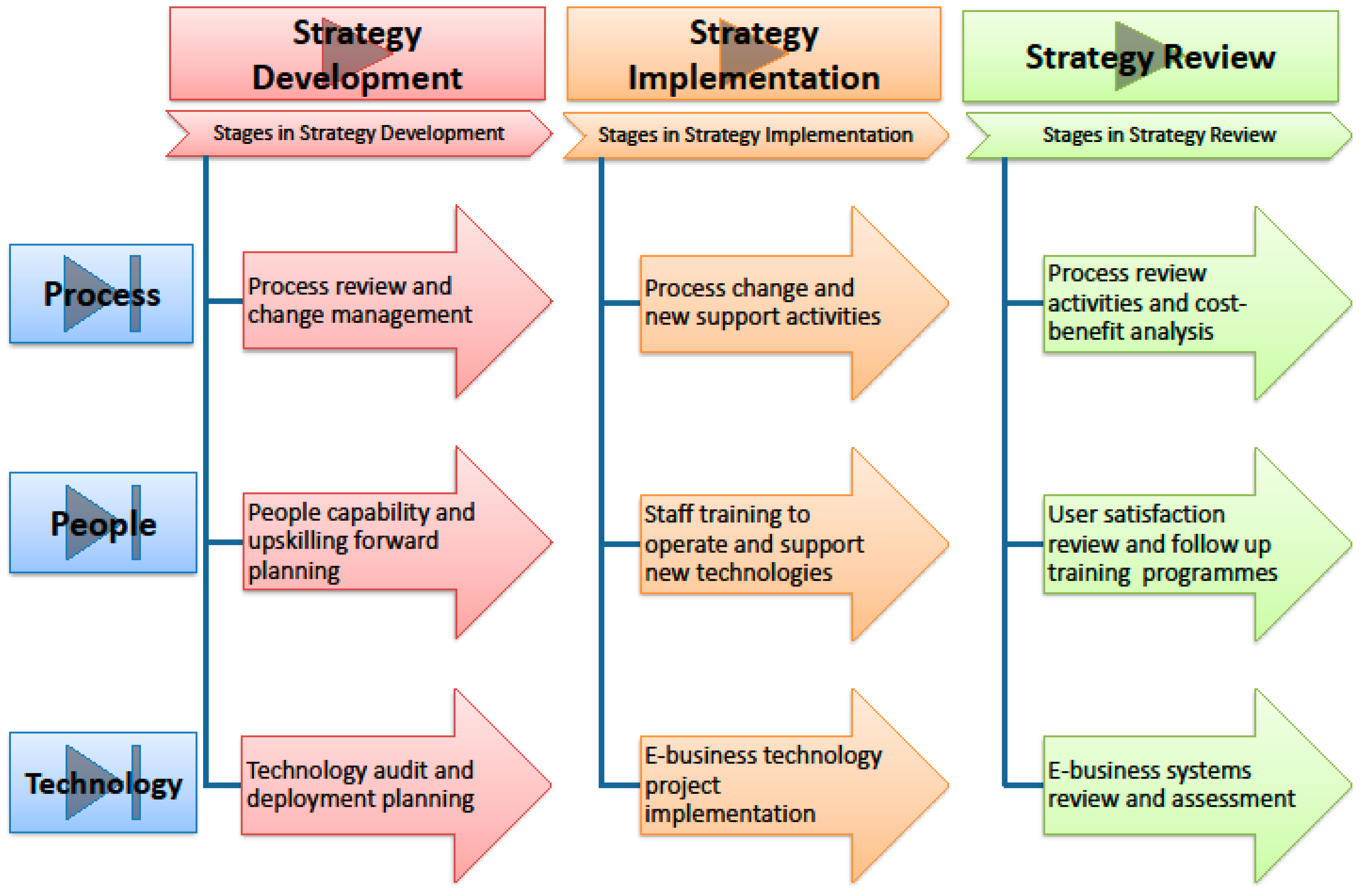

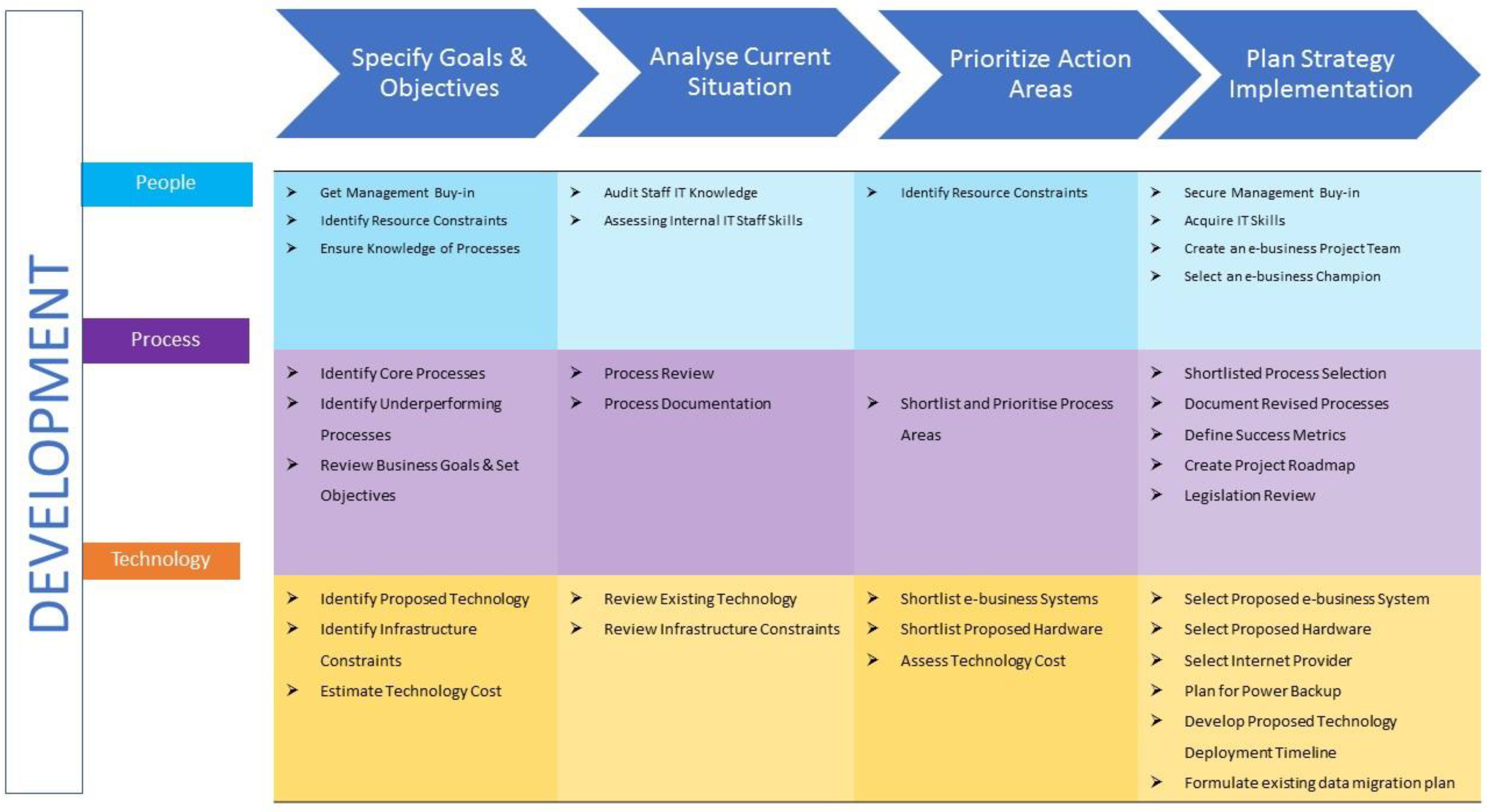
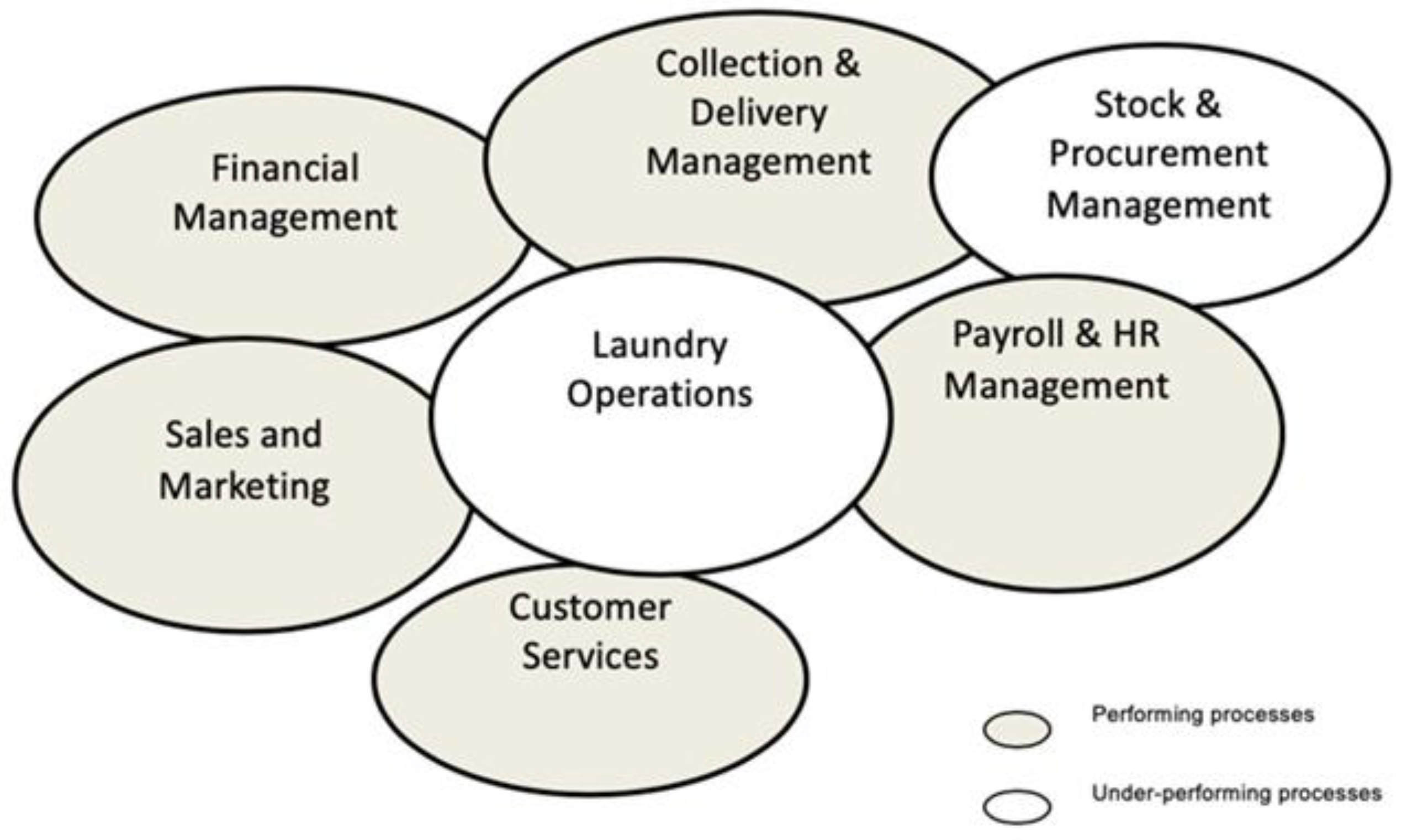
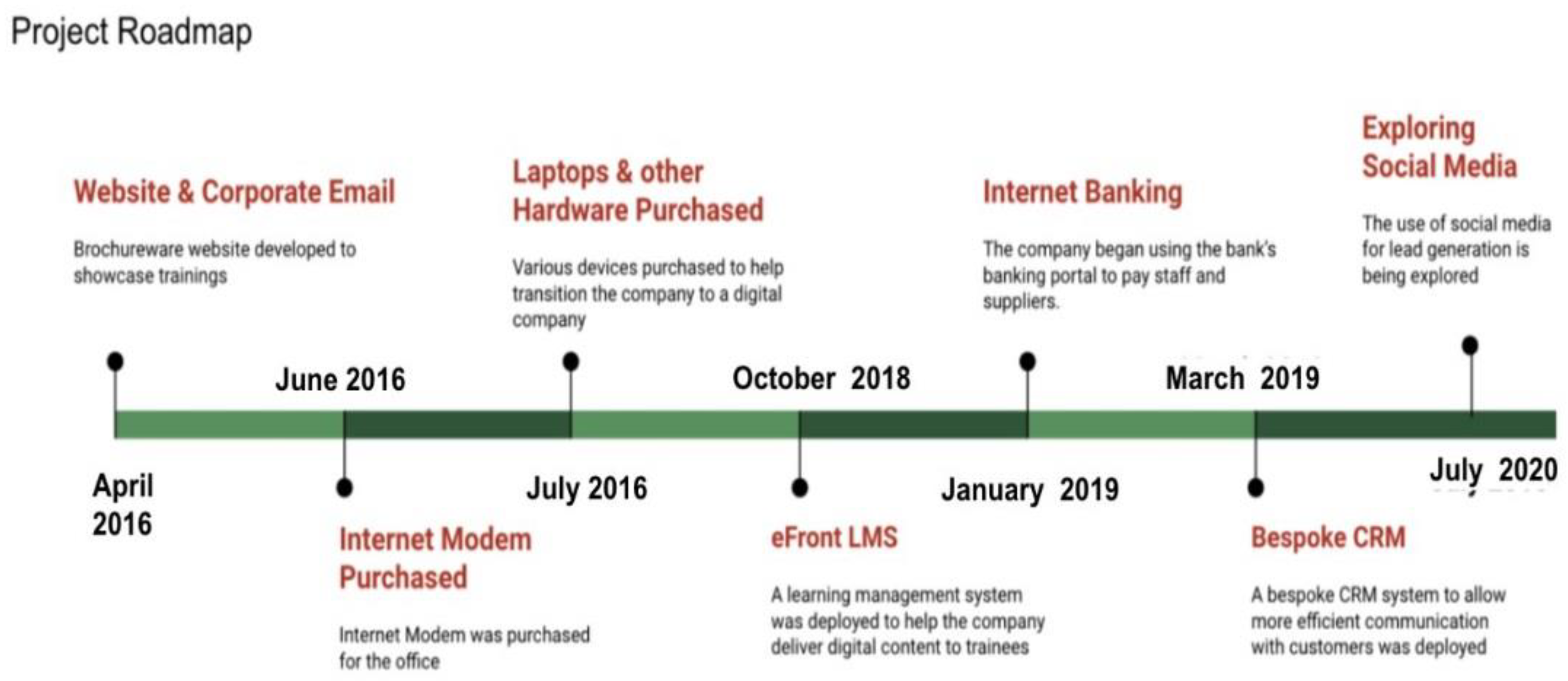

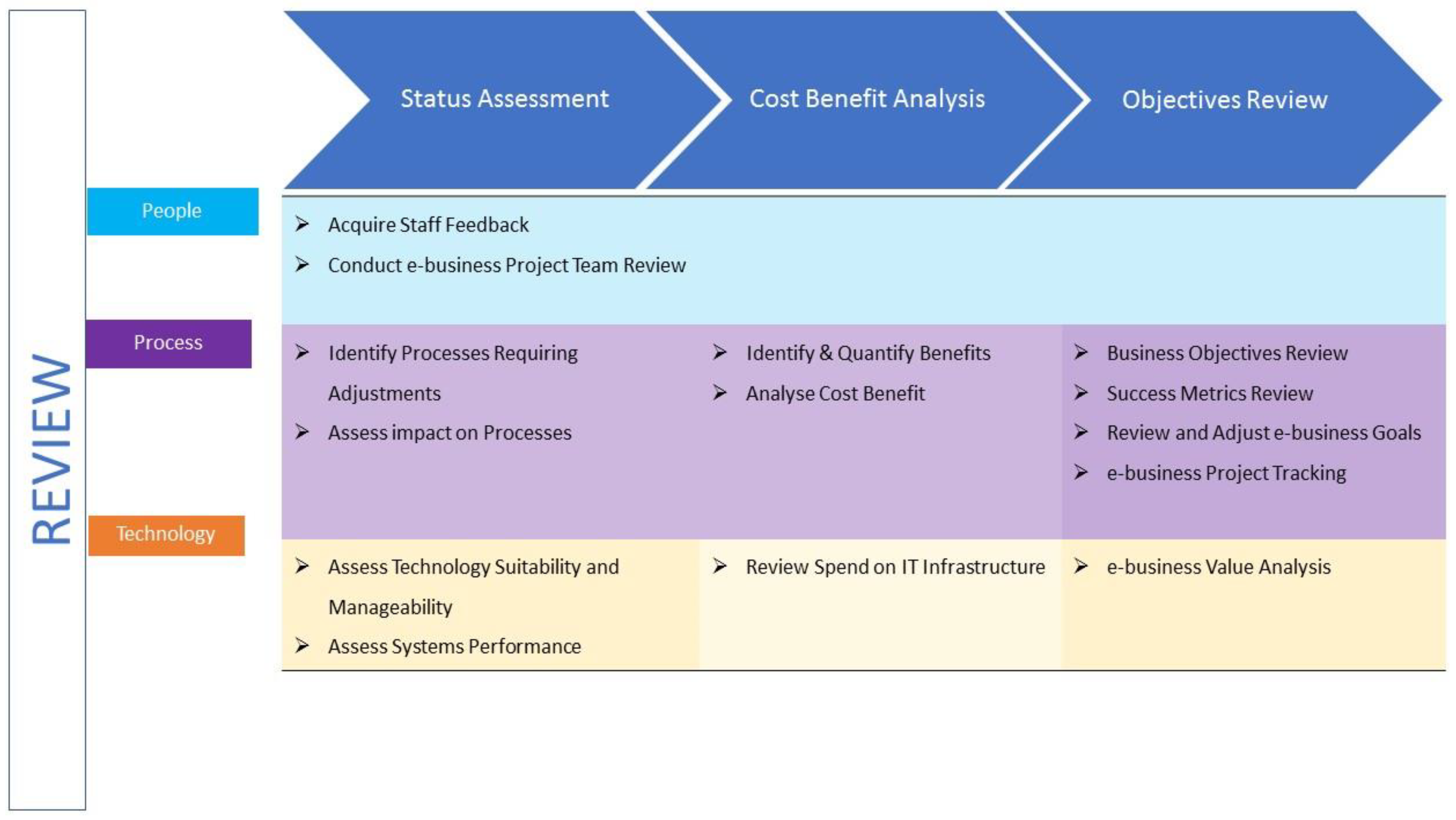
| Item | Item Description | Assessment |
|---|---|---|
| 24 | Number of data coders. How many data coders coded the data? | One |
| 25 | Description of the coding tree: Did authors provide a description of the coding tree? | No |
| 26 | Derivation of themes: Were themes identified in advance or derived from the data? | Derived from data and conceptual framework |
| 27 | Software: What software, if applicable, was used to manage the data? | NVivo |
| 28 | Participant checking: Did participants provide feedback on the findings? | Yes |
| 29 | Quotations presented: Were participant quotations presented to illustrate the themes/findings? Was each quotation identified? e.g., participant number | Yes |
| 30 | Data and findings consistent: Was there consistency between the data presented and the findings? | Yes |
| 31 | Clarity of major themes: Were major themes clearly presented in the findings? | Yes |
| 32 | Clarity of minor themes: Is there a description of diverse cases or discussion of minor themes? | Both |
| IT/E-Business System | Process Areas |
|---|---|
| Web Portal | All Process Areas |
| MTN Cloud IVR | Customer Services; Sales and Marketing |
| Biometric system | HR and Admin |
| MS Excel | Customer Services; Sales and Marketing; HR and Admin |
| Internet Banking | Financial Management; HR and Admin |
| Bulk SMS Portal | Customer Services; Sales and Marketing |
| Job Boards | HR and Admin |
| POS Terminals | Finance Management |
| Email Software-as-a-Service | Customer Services; Sales and Marketing |
| Social Media | Sales and Marketing |
| Website | Sales and Marketing |
| IT/E-Business System | Process Area |
|---|---|
| CRM | Customer Services Property Sales and Marketing |
| Website | Property Sales and Marketing Customer Service |
| MS Excel | Customer Services Financial Management Payroll and HR Management |
| Bulk SMS Portal | Customer Services |
| Email Campaign Manager | Customer Services Property Sales and Marketing |
| Social Media (Facebook, Twitter) | Property Sales and Marketing Customer Services |
| Internet Banking | Financial Management Payroll and HR Management |
| Job boards | Payroll and HR Management |
| Customer Services | |
| QuickBooks | Financial Management |
| Online Property Aggregators | Property Sales and Marketing |
| IT/E-Business System | Process Areas |
|---|---|
| Website | Sales and Marketing |
| QuickBooks | Financial Management |
| MS Excel | Procurement and Logistics Management; Financial Management; Payroll and HR Management |
| Email (Webmail) | Customer Services; Sales and Marketing; Payroll and HR Management; Procurement and Logistics Management |
| Internet Banking | Financial Management; Payroll and HR Management |
| Logistics Tracking | Procurement and Logistics Management |
| Supplier E-commerce Sites | Procurement and Logistics Management; Financial Management |
| Inverter Monitoring | Installation and Repair |
| Customer Services; Sales and Marketing | |
| Social Media (Facebook and Instagram) | Sales and Marketing |
| Job Boards | Payroll and HR Management |
| IT/E-Business System | Core Process Areas |
|---|---|
| Website | Sales and Marketing |
| eFront (Learning Management System) | Curriculum and Training |
| CRM | Sales and Marketing Customer Service |
| Internet Banking | Financial Management Payroll and HR |
| MS Excel | Payroll and HR Financial Management Curriculum and Training |
| Ms PowerPoint/Word | Curriculum and Training Sales and Marketing |
| Customer Service Sales and Marketing Payroll and HR Financial Management | |
| Job Board | Payroll and HR |
| Facebook/LinkedIn | Sales and Marketing |
| Paystack Payment Pages | Sales and Marketing |
| IT/E-Business System | Core Processes |
|---|---|
| Customer Services Sales and Marketing | |
| MS Access | Customer Service |
| MS Excel | Customer Services Financial Management Inventory Management Logistics and Delivery Management Sales and Marketing |
| Customer Services Sales and Marketing | |
| Customer Services Sales and Marketing Procurement Management | |
| E-commerce Sites and Marketplaces | Procurement Management |
| Internet Banking | Financial Management |
| Third-party Tracking API | Logistics and Delivery Management |
| Canva (Graphics Design) | Sales and Marketing |
| Paystack Payment Pages | Financial Management Sales and Marketing |
| Bulk SMS (Transactional and Promotional) | Customer Services Sales and Marketing |
| Buffer (Social Media Management) | Sales and Marketing |
| IT/E-Business System | Core Processes |
|---|---|
| Website | Business Development |
| MS Excel | Customer and Case Management Business Development Admin and HR Management Financial Management Research and Paralegal |
| Case Management | Customer and Case Management |
| Customer and Case Management Financial Management Business Development | |
| Sage Accounting | Financial Management |
| Internet Banking | Financial Management Admin and HR Management |
| Customer and Case Management Business Development | |
| DropBox | Customer and Case Management Research and Paralegal |
| MS Word | Research and Paralegal Admin and HR Management |
| Core Process | Sub-Processes | Constraints |
|---|---|---|
| Financial Management | Company Accounting | Payments are usually made to different bank accounts. Several expenses are cash-based and difficult to track. Not all expenses have receipts. |
| Invoicing | ||
| Daily Expense Tracking | ||
| Installation and Repair | Installation | This process involves the engineer visiting the site. This process largely involves several third parties—suppliers, clients and logistics provider. Appointments are subject to availability of engineer, equipment and the client location. |
| Repair | ||
| Sales and Marketing | Order Management | This largely involves working with several large organisations with limited IT drive. |
| Lead Generation | ||
| Logistics and Procurement | Procurement | Involves working with some local suppliers who use limited IT systems Logistics companies used are generally sole traders |
| Goods Tracking | ||
| Inventory | ||
| Customer Services | Problem Resolution | N/A |
| Messaging | ||
| Payroll and HR Management | Payroll | N/A |
| Recruitment |
| Staff Name: Role: Developer/IT Manager | ||||
|---|---|---|---|---|
| Competency | Behavioural Description | Lacking | Improve | Competent |
| MYSQL | Advanced knowledge of MYSQL database and server | ✓ | ||
| Web programming (PHP, ASP.NET) | Good knowledge and experience of web application programming | ✓ | ||
| Web design | Knowledge of HTML and CSS | ✓ | ||
| API | Advanced knowledge of API development, securing API and integration of third-party API | ✓ | ||
| Apache webserver | Understanding of Apache web server and experience with debugging | ✓ | ||
| Experience with Digital Ocean | Experience working with Digital Ocean as a service provider | ✓ | ||
| Networking | Advanced understanding of networking, routing and DNS | ✓ | ||
| JavaScript | Knowledge and experience working with JavaScript particularly using jQuery | ✓ | ||
| WordPress | Knowledge and experience working with WordPress to develop and manage website | ✓ | ||
| Ubuntu Linux | Comfortable working with Linux servers; this includes deploying web applications, managing them and basic system administration | ✓ | ||
| Software Testing | Experience using automated testing frameworks | ✓ | ||
| Firewall Configuration | Experience working with Iptables on Linux web servers | |||
| Git | Advanced Knowledge of Git using GitHub and Bitbucket | ✓ | ||
| IT/E-Business System | Status | Comments |
|---|---|---|
| CRM | OK | |
| Website | Needs adjustment | Difficult to update. Have to rely on the developer. |
| Bulk SMS Portal | External | |
| Email Campaign Manager | External | |
| Social Media (Facebook, Twitter) | OK | |
| Internet Banking | External | Difficult to export bank transactions data into the accounting system. |
| Job boards | External | |
| OK | ||
| QuickBooks | External | |
| Online Property Aggregators | External |
| Project Item | Deadline | Status |
|---|---|---|
| Development and Testing of Invoicing Module | March 2017 | Completed |
| Deployment of Invoicing Module | April 2017 | Completed |
| POS and Thermal Printer Deployment | April 2017 | Completed |
| Staff Training on Inventory Module | April 2017 | Completed |
| Development and Testing of Laundry Status Tracking | May 2018 | Completed |
| Deployment of Laundry Status Tracking | June 2018 | Completed |
| Integration of SMS gateway | January 2019 | Completed |
| Development of Accounts Module | August 2017 | Completed |
| Website Development | July 2018 | Completed |
| Deployment of Accounts Module | September 2017 | Completed |
| Development of Reports Module | December 2018 | Completed |
| Deployment of Biometric Attendance monitor | December 2017 | Completed |
| Development of Inventory Module | October 2017 | Completed |
| Development of Customer Profile Module | January 2018 | Completed |
| Development of Automatic email and SMS reminders | December 2017 | Completed |
| Deployment of Inventory Module | March 2018 | In progress |
| Development of Delivery Schedule | June 2018 | Completed |
| Development of Expense Tacking | January 2018 | In progress |
| Deployment of Customer Profile Module | April 2018 | Not started |
| Deployment of Customer Profile Module | June 2018 | Not started |
| Deployment of Delivery Schedule | August 2018 | Not started |
| Deployment of Expense Tacking | July 2019 | Not started |
Publisher’s Note: MDPI stays neutral with regard to jurisdictional claims in published maps and institutional affiliations. |
© 2021 by the authors. Licensee MDPI, Basel, Switzerland. This article is an open access article distributed under the terms and conditions of the Creative Commons Attribution (CC BY) license (https://creativecommons.org/licenses/by/4.0/).
Share and Cite
Wynn, M.; Olayinka, O. E-Business Strategy in Developing Countries: A Framework and Checklist for the Small Business Sector. Sustainability 2021, 13, 7356. https://doi.org/10.3390/su13137356
Wynn M, Olayinka O. E-Business Strategy in Developing Countries: A Framework and Checklist for the Small Business Sector. Sustainability. 2021; 13(13):7356. https://doi.org/10.3390/su13137356
Chicago/Turabian StyleWynn, Martin, and Olakunle Olayinka. 2021. "E-Business Strategy in Developing Countries: A Framework and Checklist for the Small Business Sector" Sustainability 13, no. 13: 7356. https://doi.org/10.3390/su13137356
APA StyleWynn, M., & Olayinka, O. (2021). E-Business Strategy in Developing Countries: A Framework and Checklist for the Small Business Sector. Sustainability, 13(13), 7356. https://doi.org/10.3390/su13137356







